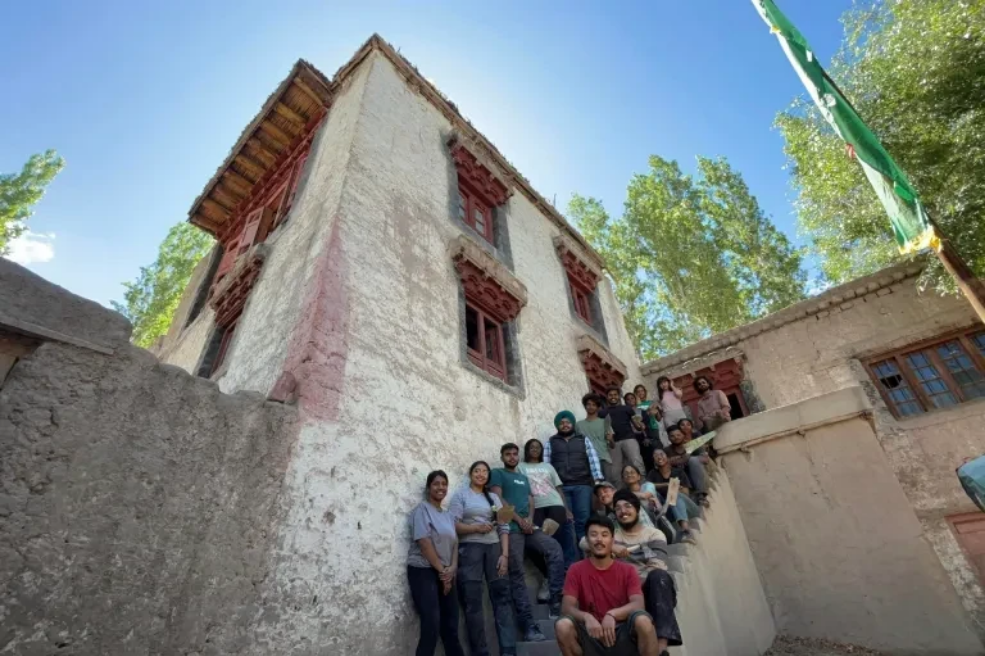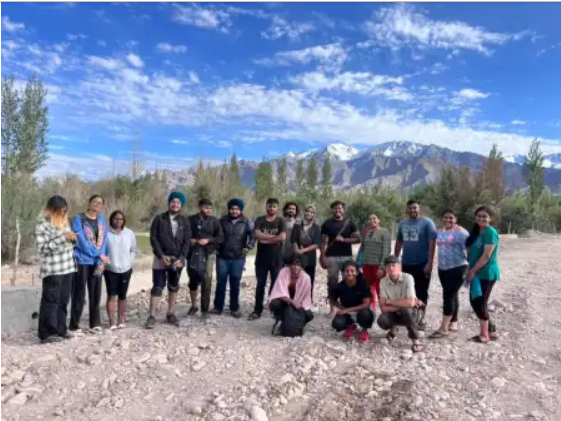In Ladakh and elsewhere in India, the built environment is dominated by structures that required unsustainable construction methods and non-renewable materials. Meanwhile, older traditional buildings are usually marginalized and neglected. A primary feature of this shift involves the use of concrete, “the most destructive material on Earth”, rather than locally-sourced wood, straw, and earthen materials like clay, sand, and stone.
While the beauty that traditional structures contribute to the built environment is often recognized, they are unfortunately thought to be structurally “weak” – even though they can withstand a variety of environmental changes while providing a much more comfortable and temperature-regulated living space.
 Within Local Futures’ broad focus on promoting economic localization – shifting our economies towards place-based, ecological, human-scale activity – they promote vernacular and traditional knowledge, skills, practices and cultures, including in the built environment. This summer they partnered with local Ladakhi enterprise Earth Building to organize a workshop to restore a historic house in the village of Chuchot, using only natural local materials, principally earth.
Within Local Futures’ broad focus on promoting economic localization – shifting our economies towards place-based, ecological, human-scale activity – they promote vernacular and traditional knowledge, skills, practices and cultures, including in the built environment. This summer they partnered with local Ladakhi enterprise Earth Building to organize a workshop to restore a historic house in the village of Chuchot, using only natural local materials, principally earth.
Asked why Earth Building was formed and what its objectives are, Stanzin Phuntsog said, “Mainly because it’s environmentally friendly, planet friendly, and it’s people friendly in terms of health – it’s non-toxic. It’s obviously better for the planet because we’re using local materials that are not sourced from far, so it has a lower carbon footprint. Another reason is because of hands-on work. Today a lot of people are looking for hands-on experiences since they have lost touch with nature. A final reason is community: people coming together to build something can have fun and build community.”
For the house restoration workshop, some 20 participants from all over India attended, most of them architecture students yearning for hands-on experience and for alternatives to conventional materials and design. They rebuilt and replastered a number of walls, repaired the traditional compost toilet room, did structural repair to ceilings/roof, and reconstructed an adobe brick roof parapet, among other things.
The family who last lived in the house was also excited to see the restoration. When family members visited on one of the workshop days to go through old belongings, They shared stories and memories from the several generations that had lived there.
The restored historic house will eventually serve as a vibrant workshop space and office for Local Futures Ladakh, and will become a hub of culture, activism, healthy local food systems and young farmers. It will be a refuge for critical thought, traditional knowledge and timeless beauty in a rapidly modernizing Ladakh.
 The workshop has fostered new skills and knowledge for both organizers and participants, built community and conviviality, generated interest in restoring old houses and returning to natural materials amongst local villagers, and reconnected participants with their bodies and with the local environment. A lot of laughter and satisfied tiredness accompanied the seven days of mixing, hauling, throwing, smearing, plastering, and burnishing mud! In other words, besides making great strides towards restoring the house, the workshop has helped restore the participants.
The workshop has fostered new skills and knowledge for both organizers and participants, built community and conviviality, generated interest in restoring old houses and returning to natural materials amongst local villagers, and reconnected participants with their bodies and with the local environment. A lot of laughter and satisfied tiredness accompanied the seven days of mixing, hauling, throwing, smearing, plastering, and burnishing mud! In other words, besides making great strides towards restoring the house, the workshop has helped restore the participants.
You can read the original article at www.resilience.org
